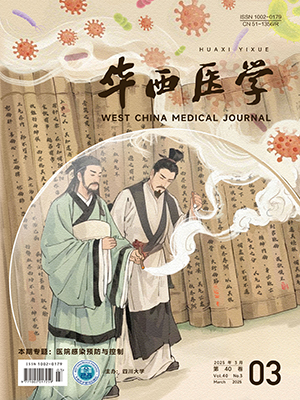| 1. |
Guo A, Mujais S. Patient and technique survival on peritoneal dialysis in the United States:evaluation in large incident cohorts[J]. Kidney Int, 2003, 64(Suppl):S3-S1.
|
| 2. |
Crabtree JH, Fishman A. A laparoscopic method for optimal peritoneal dialysis access[J]. Am Surg, 2005, 71(2):135-143.
|
| 3. |
张浩, 张柯, 姚凯, 等. 腹腔镜在腹膜透析管堵管中的临床应用[J]. 中国内镜杂志, 2008, 14(2):216-224.
|
| 4. |
Tsimoyiannis EC, Siakas P, Glantzounis G, et al. Laparoscopic placement of the Tenckhoff catheter for peritoneal dialysis[J]. Surg Laparosc Endosc Percutan Tech, 2000, 10(4):218-221.
|
| 5. |
Crabtree JH, Fishman A. A laparoscopic approach under local anesthesia for peritoneal dialysis access[J]. Perit Dial Int, 2000, 20(6):757-765.
|
| 6. |
Oğünç G, Tuncer M, Oğünç D, et al. Laparoscopic omental fixation technique versus open surgical placement of peritoneal dialysis catheters[J]. Surg Endosc, 2003, 17(11):1749-1755.
|
| 7. |
Wick G. Continuous quality improvement:a problem solving approach (Part 2) (Educational Supplement)[J]. Nephrol Nurs Today, 1993(3):1-8.
|
| 8. |
王鑫, 汪涛. 持续质量改进在纠正腹膜透析患者贫血中的作用[J]. 中国中西医结合肾病杂志, 2004, 5(5):266-269.
|
| 9. |
骆素平, 董捷. 持续质量提高在腹膜透析相关性腹膜炎防治中的应用[J]. 中国血液净化杂志, 2008, 7(4):227-229.
|
| 10. |
Figueiredo A, Goh BL, Jenkins S, et al. Clinical practice guidelines for peritoneal access[J]. Perit Dial Int, 2010, 30(4):424-429.
|
| 11. |
Jwo SC, Chen KS, Lee CC, et al. Prospective randomized study for comparison of open surgery with laparoscopic-assisted placement of Tenckhoff peritoneal dialysis catheter:a single center experience and literature review[J]. J Surg Res, 2010, 159(1):489-496.
|
| 12. |
Crabtree JH, Fishman A. Videolaparoscopic implantation of long-term peritoneal dialysis catheters[J]. Surg Endosc, 1999, 13(2):186-190.
|
| 13. |
Crabtree JH, Fishman A. Laparoscopic omentectomy for peritoneal dialysis catheter flow obstruction:a case report and review of the literature[J]. Surg Laparosc Endosc Percutan Tech, 1999, 9(3):228-233.
|
| 14. |
Ogunc G. Minilaparoscopic extraperitoneal tunneling with omentopexy:a new technique for CAPD catheter placement[J]. Perit Dial Int, 2005, 25(6):551-555.
|
| 15. |
Numanoglu A, Rasche L, Roth MA, et al. Laparoscopic insertion with tip suturing, omentectomy, and ovariopexy improves lifespan of peritoneal dialysis catheters in children[J]. J Laparoendosc Adv Surg Tech A, 2008, 18(2):302-305.
|
| 16. |
郝世军,王卫军, 李剑锋,等.腹膜透析手术在尿毒症患者腹膜透析治疗中的应用[J]. 中国微创外科杂志, 2014, 14(2):126-128.
|
| 17. |
徐海燕, 蔡莉莉. 腹膜透析早期透析管移位的原因分析和对策[J]. 解放军护理杂志, 2008, 25(22):46-47.
|
| 18. |
曹峻, 谷昊, 邰沁文, 等. 腹腔镜在腹膜透析管置入术中的临床应用[J]. 中国内镜杂志, 2010, 16(8):864-866.
|




